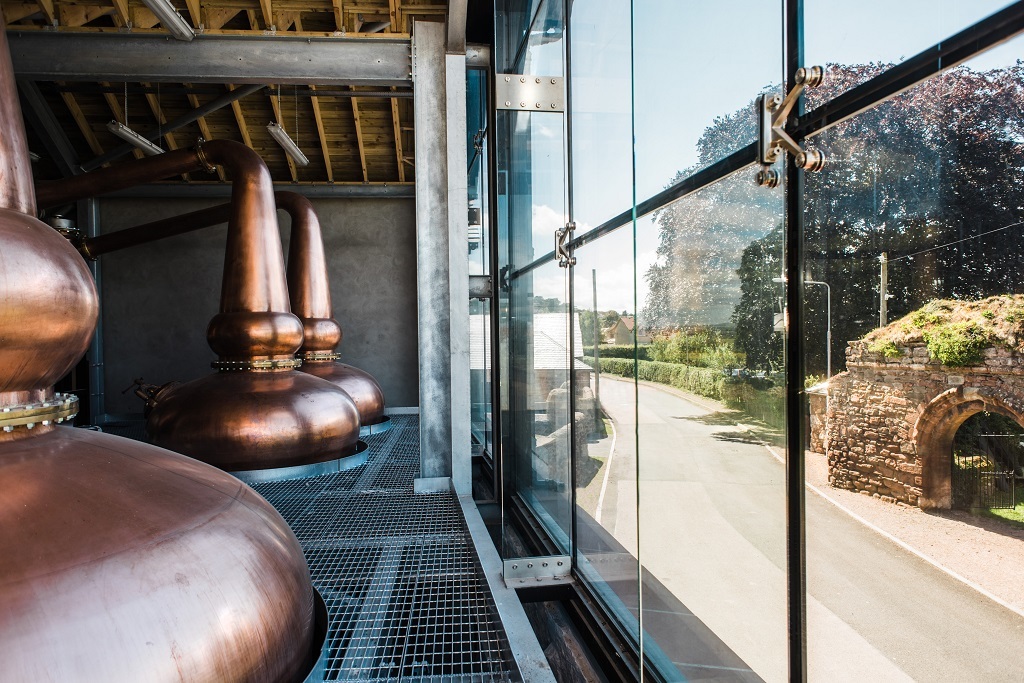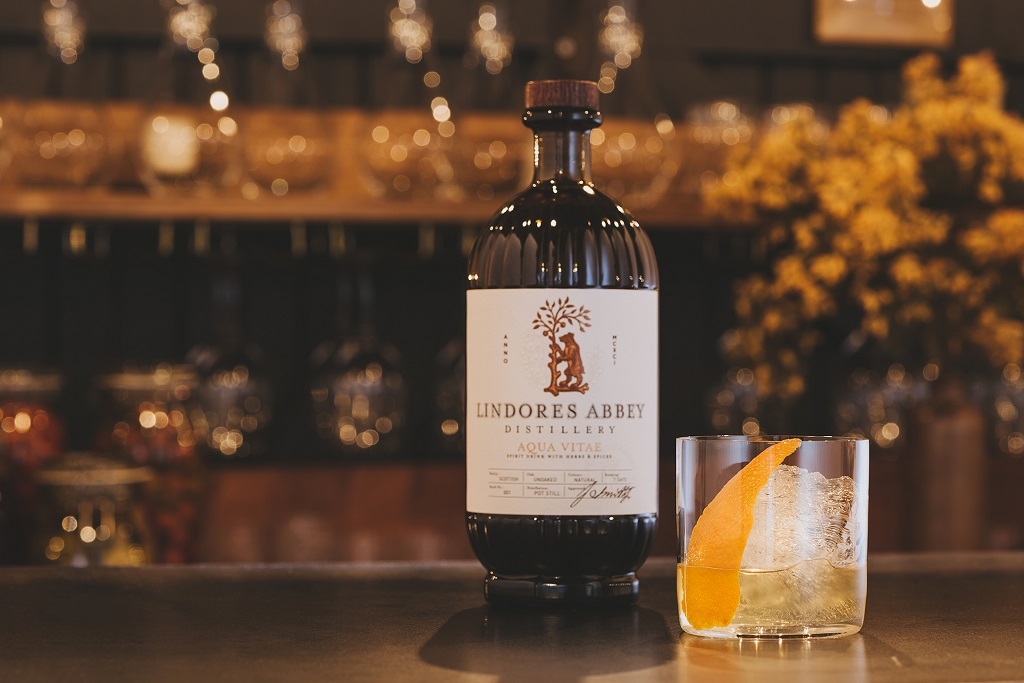Regarded as ‘the spiritual home of Scotch whisky,’ Lindores Abbey Distillery celebrates its first anniversary since it opened to the public on 5 October last year.
The team at the distillery brought whisky production back on the historical site of Lindores Abbey in Newburgh in Fife. It was here that, according to the Exchequers Roll, resident Friar John Cor was commissioned to ‘make aqua vitae eight bolls of malt’ by King James IV in 1494, providing the first written reference to whisky distillation is Scotland.
MD and founder of Lindores Abbey Distillery, Drew McKenzie Smith, said that the project, which was given permission in 2013 and whose works started in 2016, has been well received by the local community and that it already is a well-established reality.
‘To say that this year has flown is an understatement. The past 25 years of my life have been dedicated to getting this project off the ground, and to be able to stand in the still house overlooking the ruins now is simply a dream come true. With the help of our outstanding team, loyal visitors and enthusiastic supporters, we have achieved so much in just 12 months.

‘There is a lot of good will behind the distillery. When we put the planning application in there was no single objection. We’d like to think this is because we have been here for more than 10 years, and Newburgh has quite a high unemployment since a fire brought down the linoleum factory in the 1970s, and we turned into the biggest employer since then.
‘Even if it opened just last year, it feels like it has been here for a long time.’
McKenzie Smith and his wife Helen, who have spent their lives working in luxury hospitality, are the founders of the distillery.
The land on which the Abbey’s ruins stand were owned by the family since 1913 and, although they were at first ‘blissfully unaware’ of the link to the roots of Scotch whisky, a seed for the future project was planted when leading whisky writer Michael Jackson asked Drew’s father to wander among the historical remains 20 years ago. It was then included in his work Scotland And Its Whiskies, and the key reference, ‘For the whisky-lover, it is a pilgrimage,’ now welcomes the visitors in the entrance hall of the distillery.

However, the project goes way beyond whisky production, which began last year in December.
Designed by Organic Architects, the building is conceived as a tribute to the work of the Tironensian monks, the French order which inhabited the Abbey, which was founded by David Earl of Huntingdon in 1191 and which witnessed kings and queens among its visitors, as well as William Wallace.
The aim, fostered by the creation of a Preservation Society, is to create a hub to share knowledge concerning the Tironensian monks’ activities and their horticultural and medicinal skills, creating a living link to their times. This includes the development of an orchard, the restoration of a beehive and a visitor designed to educate the public on the history of the Abbey.
‘We are very keen with all of this, not to pin the whole story on two lines of the Exchequers Roll,’ said McKenzie Smith.
‘Of course, that’s the main reason we have a distillery here now, but the Abbey has so much more history than that.
‘One of the reasons they were such a successful order is that they were the first who believed in going out from outwith the monastery and embracing the community. There was a method in their madness because then the community embraced them.
‘They were renowned for using the most modern techniques they were bringing over from Europe and they used these techniques not just for brewing and distilling, but there was 38 acres of orchards here, so they really set about advancing this part of Scotland.’

The spirit at Lindores Abbey is made by using uniquely barley grown in Fife and malted by Pot Still Malt in Muntons, England, but from next year they will start using the harvest from two neighbouring farms, some of which already receive the draff produced by the distillery to feed Aberdeen Angus cattle.
While the first releases will be unpeated, the possibility of a peated expression is being explored, as there is written proof the monks had been using peat 600 years ago. The single wash still and the two twin spirit stills would impart to the spirit a fruity and spicy character, already lively in the newmake.
A joint effort with researchers at Heriot-Watt University aim to replicate and use an ancient strain of wild yeast that was present at the times the monks inhabited the Abbey.
Distillery manager Gary Haggart said: ‘This is very interesting, the wild yeast takes a lot longer to fully ferment, the yeast we use takes 36 to 48 hours but the wild yeast is double the length of time to ferment.
‘Wild yeast by its very nature is also robust, my worry would be the wild yeast taking over the plant and the process, especially around our wooden washbacks, hopefully we can work with Heriot-Watt again and test the wild yeast with our wort and make sure it’s right for the distillery and right for the spirit.’
At the moment, fermentation takes from 92 to 114 hours in the four washbacks at Lindores, with the first single malt release expected to see the light around 2023, after 5 years of maturation.

However, Haggart said that there might be a chance of seeing a year three and four bottling if casks and fermentation prove to be particularly good.
While the spirit is maturing in the distillery’s warehouses – one on site and another in Glasgow – the team at Lindores Abbey Distillery decided not to follow the gin production trend but to release an unaged aqua vitae, which they launched last June.
The spirit is a blended malt spirit drink infused with natural spices and herbs – sweet cicely, douglas fir, cleavers and lemon verbena and has herbal character balanced by delicate raisins and honey, with cinnamon and ginger notes.
The bottle itself is designed to resemble the carved stones found during the archaeological excavations on the distillery’s site – another nod to the monk’s heritage.
The distillery has achieved a 5-star visitor centre status from Visit Scotland and has been selected as a finalist in Rural Business of the Year awards – whose winner will be announced later this month.
Birthday celebrations will take place today, Friday 5 October, with a barbecue, music and cocktail masterclasses.
TAGS

